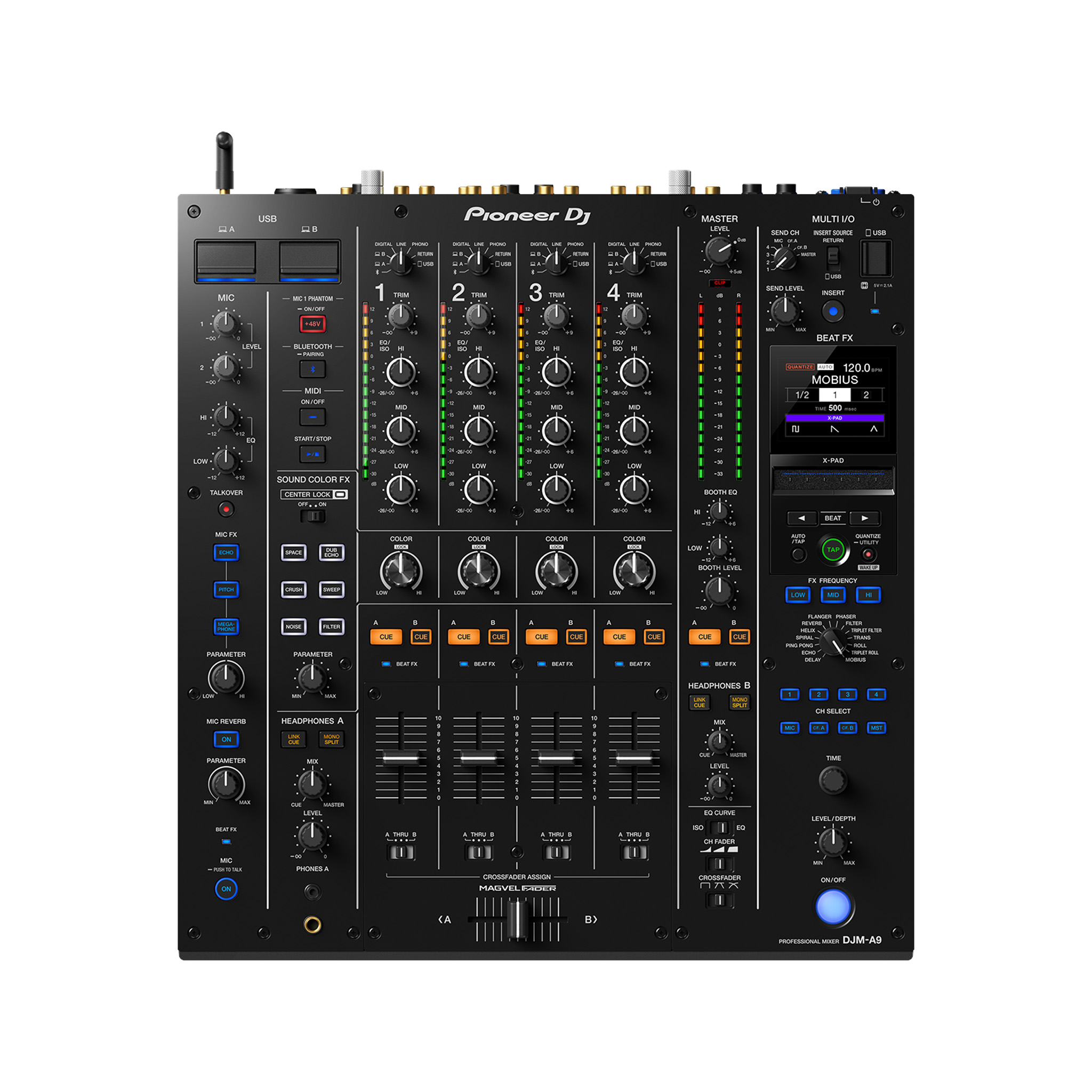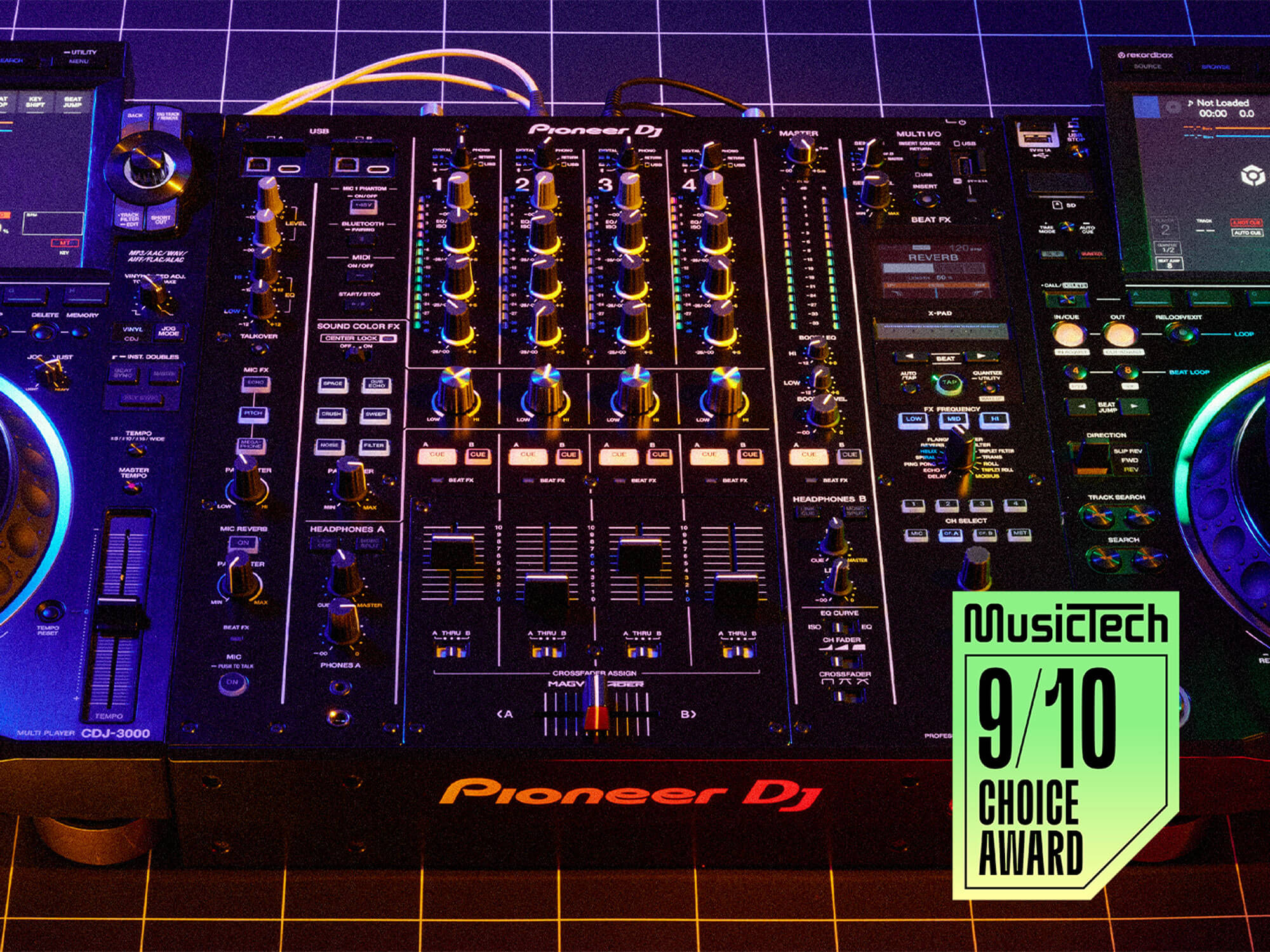
The Big Review: Is Pioneer DJ’s DJM-A9 the new monarch of DJ mixers?
Better sound quality, new gizmos, expanded connectivity, and a whopping new form factor – the DJM-A9 seems like it’ll be sticking around for a few years.
Image: Simon Vinall for MusicTech
DJs, get ready to start seeing the DJM-A9 mixer at your favourite venues. Pioneer DJ has dominated the DJ booth for decades now, with its iconic CDJ players and DJM series mixers being a staple setup for performers around the world. And with its latest flagship mixer, the DJM-A9, the brand is hoping to uphold its esteemed global reputation. The new mixer boasts enhanced audio quality, a dedicated microphone section, modern connectivity options, and creative features that make it a joy to perform with.
But in the 12 years since the release of the DJM-A9’s predecessor, the DJM-900 NXS2, how much has Pioneer learned about its user base? Is this new feature-filled mixer capable of fulfilling the desires of DJs working across myriad styles and genres? And, with a hefty price tag of £2,469, is the DJM-A9 really worth the investment? For venues, it’s probably a no-brainer. For DJs mixing at home, it could be a different story.
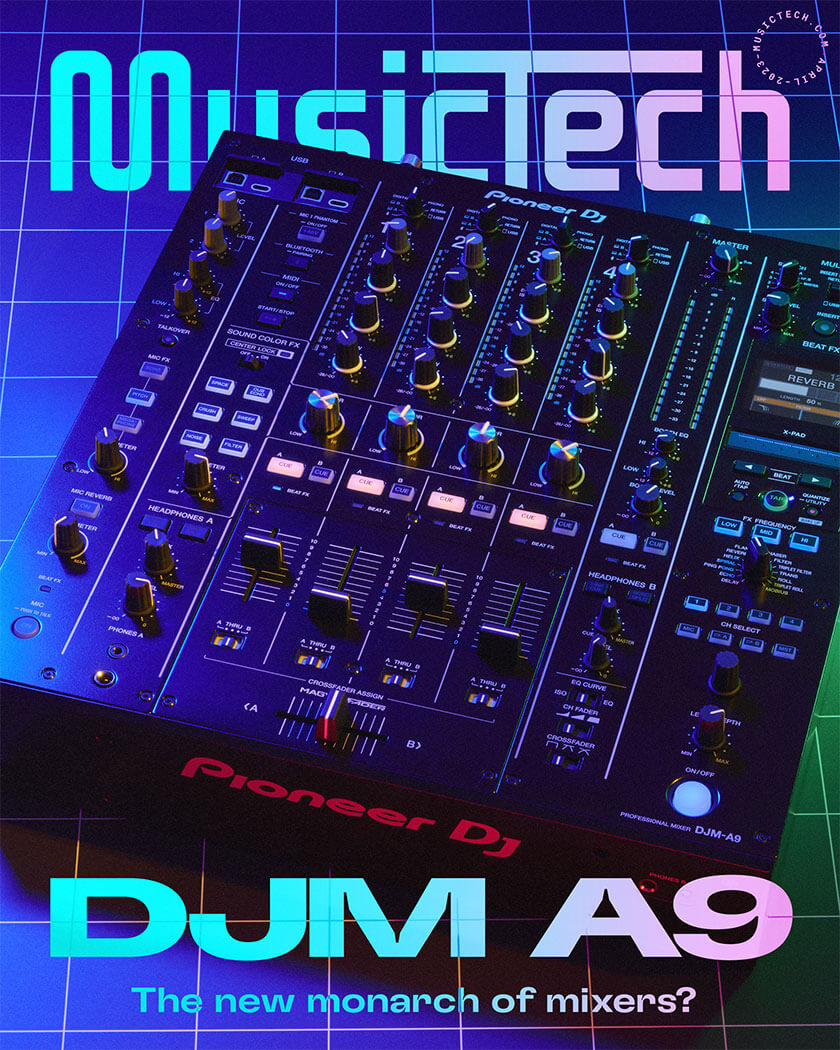
This mixer is right at home in the Pioneer DJ family. Aesthetically, it sports the same style you’d expect from a Pioneer product, and it’s not vastly different to the brand’s previous flagship mixers. Beyond the few extra bells and whistles on the outside, the most noticeable change is the size of the DJM-A9.
Taking several cues from the Pioneer DJ DJM-V10 mixer, released in 2020, the DJM-A9 is a chunky unit. Despite being four channels, compared to the V10’s six channels, the A9 isn’t far off being the same size – 407.4×458.3×107.9mm and 10.2kg in weight – making it a little wider than the DJM-900 NXS2. But make no mistake, its impressive heavyweight design ensures that it’s durable even in the most energetic and vigorous performances. All the faders and knobs are assuredly strong, including the new Center Lock Sound Color FX dial (more on that in a moment).
However, this increased size will necessitate more space in existing setups, which might be a challenge for some DJs and venues, particularly if you have a workspace that’s custom-built for a DJM-900 NXS2, for example. Frustratingly, you’ll also need to invest in a new flight case if you plan on taking this mixer around with you – which means you’ll have to invest a few hundred pounds more, too.
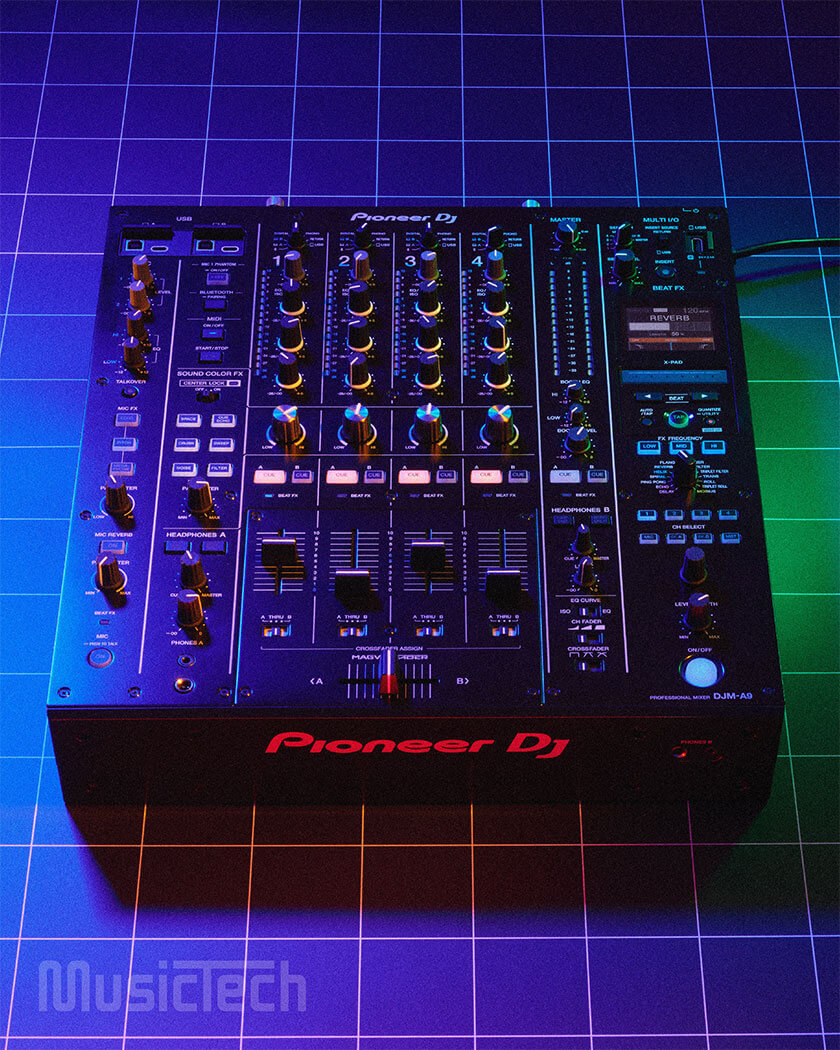
Why the extra space, then? Well, for starters, Pioneer has expanded on the DJM-900’s microphone channel, now boasting a selection of effects and 48v phantom power. The latter now gives artists the opportunity to connect condenser mics which, typically, are better suited to vocal performances compared to dynamic microphones. This will surely be a boon to broadcast DJs and vocalists using the DJM-A9. Couple this with the four channel effects – Pitch, Megaphone, reverb and echo – plus Beat FX routing, and you’ll be able to manipulate vocals effortlessly and creatively.
Also new on this side of the mixer are dual USB-C and USB-A connections for connecting extra devices such as laptops and tablets. Also, a handy MIDI function allows you to custom-map the mixer’s controls to accompanying music software. Thankfully, the mixer is compatible with rekordbox and Serato software right out of the box, but this MIDI function will let you get connected to myriad other programs.
Bluetooth connectivity is also accessible here, which is easy to pair and will be invaluable for venues that want to play music through the sound system before the DJ arrives. There’s also Wi-Fi connectivity for using the companion app, Stagehand. However, you’ll need to attach an antenna (included in the box) that feels like it could break at any moment. We removed it completely, as it becomes more of a hindrance than anything. Plus, Pioneer hasn’t made the Stagehand app free, which feels like a kick in the teeth given both the price of the DJM-A9 and the niche nature of the Stagehand app (it’s targeted mostly towards front-of-house engineers wanting to get under the hood of the mixer).

As mentioned, the Sound Color FX section has been updated from the DJM-900, most notably with an innovative Center Lock dial. This ‘locks’ at 12 o’clock, preventing you from pushing your effects too far in the wrong direction. For instance, if you have the filter active and Center Lock turned on, you’ll be unable to move from the high-pass filter mode into the low-pass filter mode. This is seriously useful for DJs who might be fairly rigorous with the Color FX knobs but, happily, you can easily disable this with the flick of a button should you wish. We find it more practical in our mixes to leave the lock turned off, though you might find otherwise.
We also find that the lock mechanism feels reliably strong. We deliberately try to force it past the central position but it doesn’t seem to budge, unless we get pretty aggressive with it.
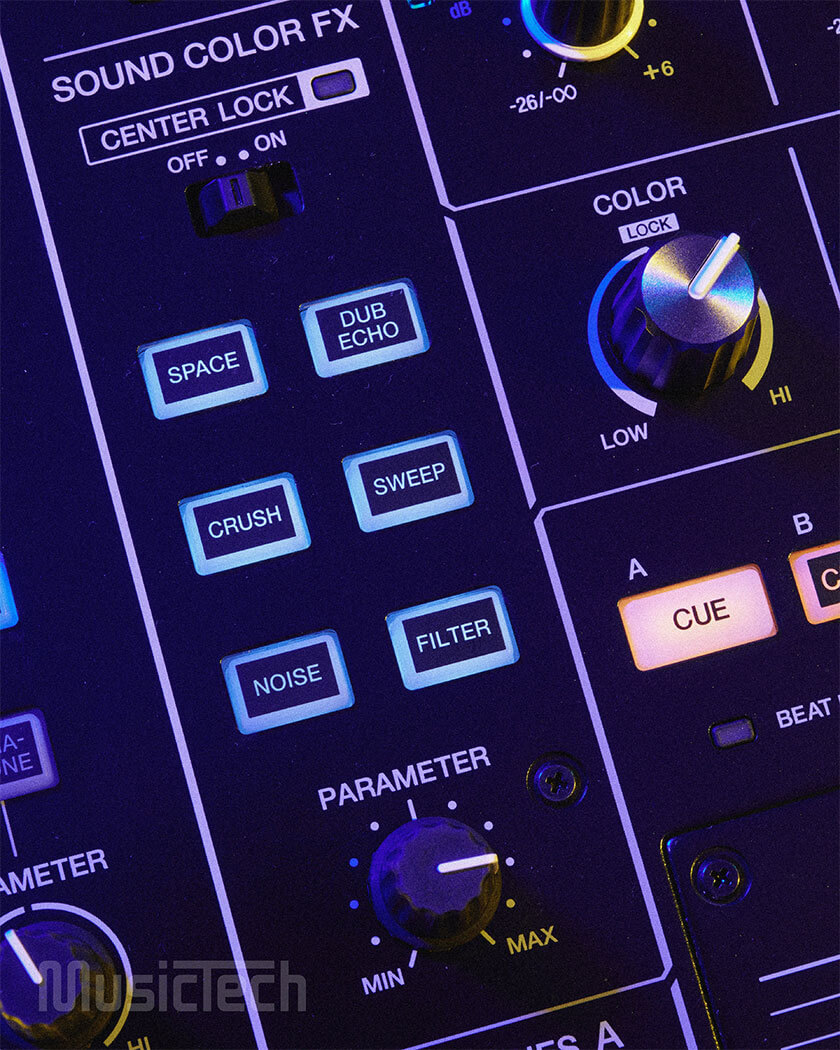
Would you believe it? There are even more effects on board the DJM-A9. If you’ve used the DJM-900 NXS2, you’ll be familiar with the Beat FX section on the right of the mixer, which lets you apply a host of fun effects to individual channels or the master with control over the timing and intensity of the effect.
New, though, are three effects: Mobius, triplet filter and triplet roll. We had a blast deploying the shepherd tone-style effect, Mobius, across our mixes, using it to create intense build-ups. Meanwhile, having the option of triplet effects introduces another means of adding flair to your dance music set.
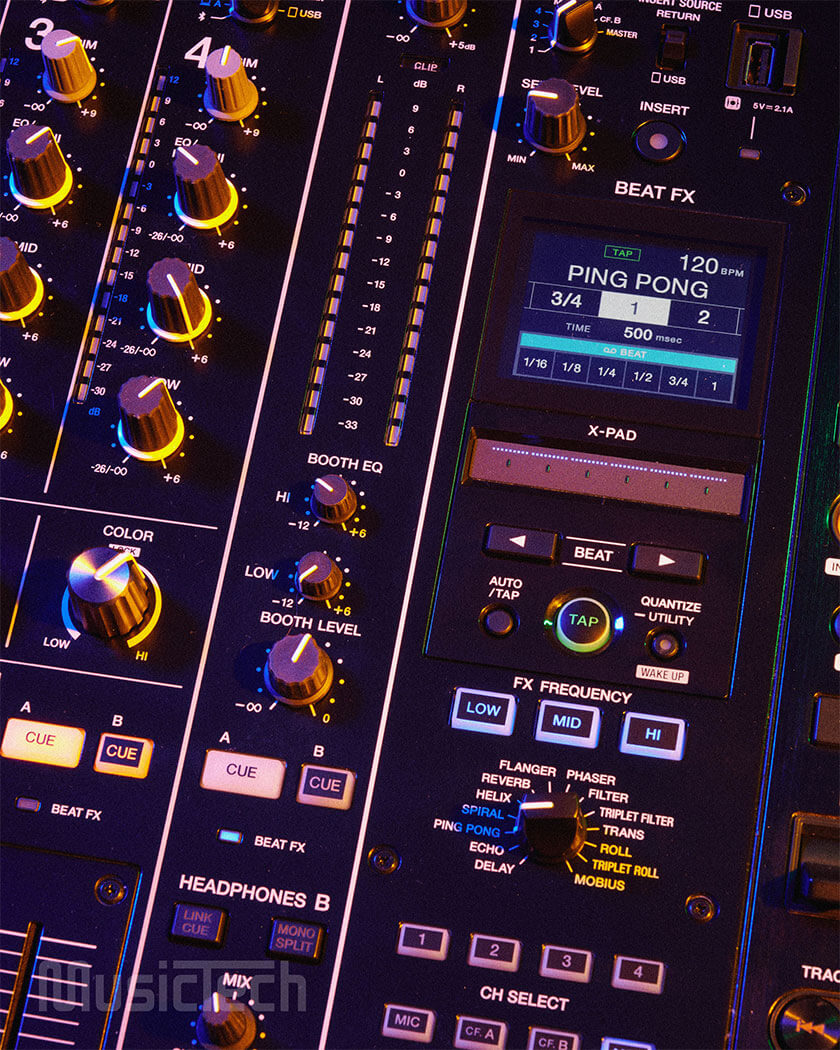
Although these are fantastic additions to the Beat FX unit, it would’ve been nice to see a few more handed to us – or perhaps a rehaul of the current offering. One bonus, though, is that the DJM-A9 saves your last parameters for each effect, which makes it a breeze to flit between them.
Also new in this section is the X-Pad, new channel select buttons – as opposed to the selector knob – and an expanded touch screen. The X-Pad is, frankly, a little gimmicky but is quite a fun way to temporarily adjust the parameters of an effect; we rarely reach for it. The channel select buttons are much more intuitive than the DJM-900, however, so we’re glad Pioneer decided to change this up.
The DJM-A9’s screen is not only superb for providing information on your effects, but is also incredibly useful for diving deeper into the mixer’s settings. Better still, you can save your mixer settings to a USB and load them into any other DJM-A9. This is sure to be beneficial for DJs with specific requirements moving from venue to venue.
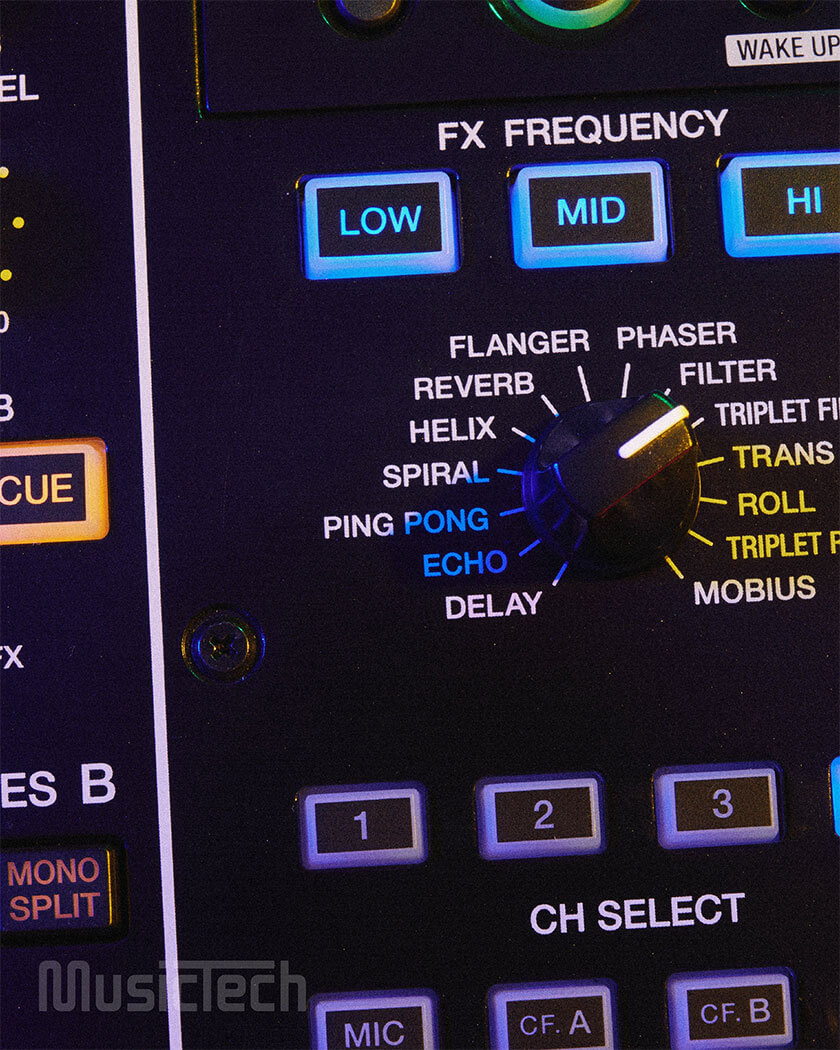
Your back-to-back DJ set just got a little bit easier. Close by to the Beat Fx section, the DJM-A9 has a second dedicated headphone system, meaning that two DJs can take control of their own cue channels and listen to the mix via an eighth-inch and quarter-inch jack output. As DJ culture continues to embrace collaborative performances, we welcome this addition with open arms.
For a better-sounding set, Pioneer has built the DJM-A9 with 32-bit float A/D converters, offering more detail in the mixer’s audio output. This is another feature borrowed straight from the DJM-V10, which has become revered for its supreme sound quality. Of course, we can attest to the sound in our controlled studio environments, but this will be most notable in venues or festival stages with much more comprehensive sound systems.
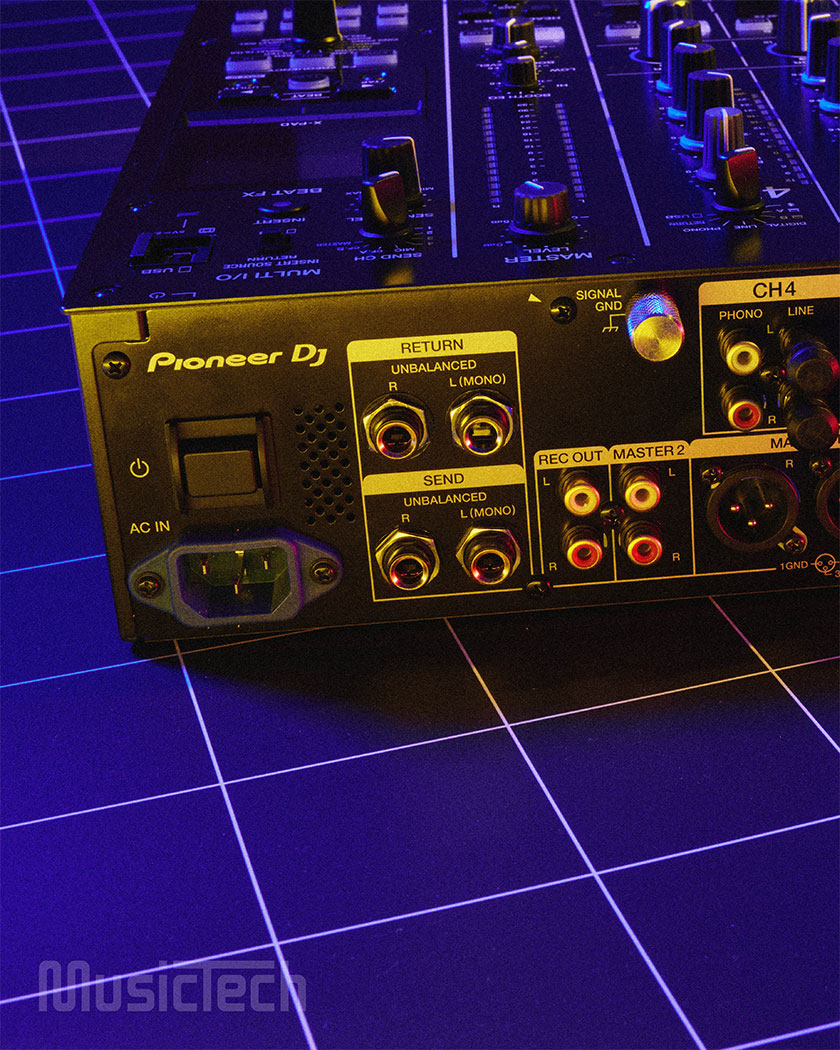
In conclusion, the Pioneer DJ DJM-A9 is an impressive piece of equipment that offers a range of innovative features and enhancements over its predecessor, the DJM-900 NXS2. Its larger size and increased durability, improved sound quality, advanced Beat FX, and expanded connectivity options make it an attractive option for professional DJs who want to elevate their performances. Of course, these new features come at a higher price tag than the DJM-900 NXS2, and some frustrating complications due to the size. If money isn’t an issue, we’d strongly suggest considering the V10, given that the price tag isn’t too far off the DJM-A9.
The ultimate goal of any DJ mixer is to enable the artist to express their unique vision and deliver unforgettable experiences to their audiences. We have no doubts that this mixer is future-proofed and we look forward to subsequent models, as we saw with the DJM-900’s multiple iterations. We had incredible fun mixing with the DJM-A9 and we’re sad to return it to Pioneer DJ and revert to older models.
Find out more at pioneerdj.com
